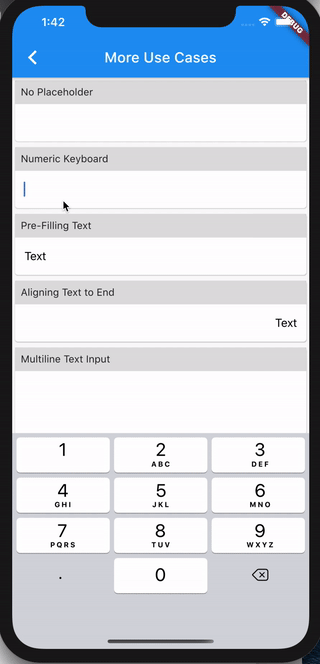

Consider different screen sizes and orientations and how your UI elements should adapt. Plan your layout carefully before diving into the code. Flutter's built-in emulator and hot-reload feature make it a breeze to preview and iterate on different form factors, allowing you to fine-tune your designs for optimal responsiveness.Īs you embark on your responsive layout journey with Flutter, keep these key tips in mind: Testing on Multiple Devices: To ensure the responsiveness of your layouts, it's crucial to test your application on various devices and screen sizes. Flutter's `LayoutBuilder` widget enables you to customize your layout based on constraints such as minimum and maximum width or height, ensuring your UI looks polished on devices of all sizes.Ħ. You can define these breakpoints and apply different layout strategies for each one.

Breakpoints are specific screen sizes where your design may need to adapt significantly. Breakpoints and Layout Constraints: As you build responsive layouts, it's essential to define breakpoints and layout constraints. This allows you to rearrange elements, reflow text, or even switch between different UI configurations, providing a smooth user experience.ĥ.

By using the `OrientationBuilder` widget, you can adjust your layout based on whether the device is in portrait or landscape mode. Orientation Awareness: Flutter makes it a breeze to handle orientation changes. They allow you to specify how much space a widget should occupy relative to its siblings, making it easier to create fluid and adaptable designs.Ĥ. By wrapping your UI elements with these widgets, you can allocate space dynamically, ensuring that your layout scales gracefully across different screen sizes. Flexible and Expanded Widgets: The `Flexible` and `Expanded` widgets play a crucial role in creating responsive layouts. For example, you can conditionally change the size or position of certain elements based on the available screen width or height.ģ. You can use this information to make informed decisions about how your layout should adapt. MediaQuery: Flutter's `MediaQuery` class is a powerful tool that gives you access to information about the device's screen size, orientation, and pixel density. These widgets allow you to arrange and position your UI elements in a flexible manner.Ģ. Widgets like `Container`, `Row`, `Column`, and `Expanded` are your best friends when it comes to creating responsive layouts. Widgets Galore: Flutter provides a rich set of widgets that serve as the building blocks for your user interface. Now, let's dive into the key concepts and techniques for building responsive layouts in Flutter:ġ. With Flutter, you can create flexible and adaptive layouts that adapt to different form factors effortlessly. One of its standout features is its robust support for responsive layouts, enabling developers to design applications that look great on various devices, from smartphones to tablets and even desktop screens.īut what exactly is a responsive layout? Put simply, a responsive layout adjusts its appearance and behavior based on the screen size and orientation of the device. So grab your coding gloves and let's embark on this exciting journey!įlutter, Google's open-source UI toolkit, has gained immense popularity among developers for its ability to create beautiful and performant cross-platform applications. Are you ready to dive into the fascinating world of Flutter? In this blog, we will explore the art of building responsive layouts with Flutter and unlock the secret to creating stunning user interfaces that adapt seamlessly to different screen sizes and orientations.


 0 kommentar(er)
0 kommentar(er)
